Instruction
How I hit drives 56 yards farther with one adjustment
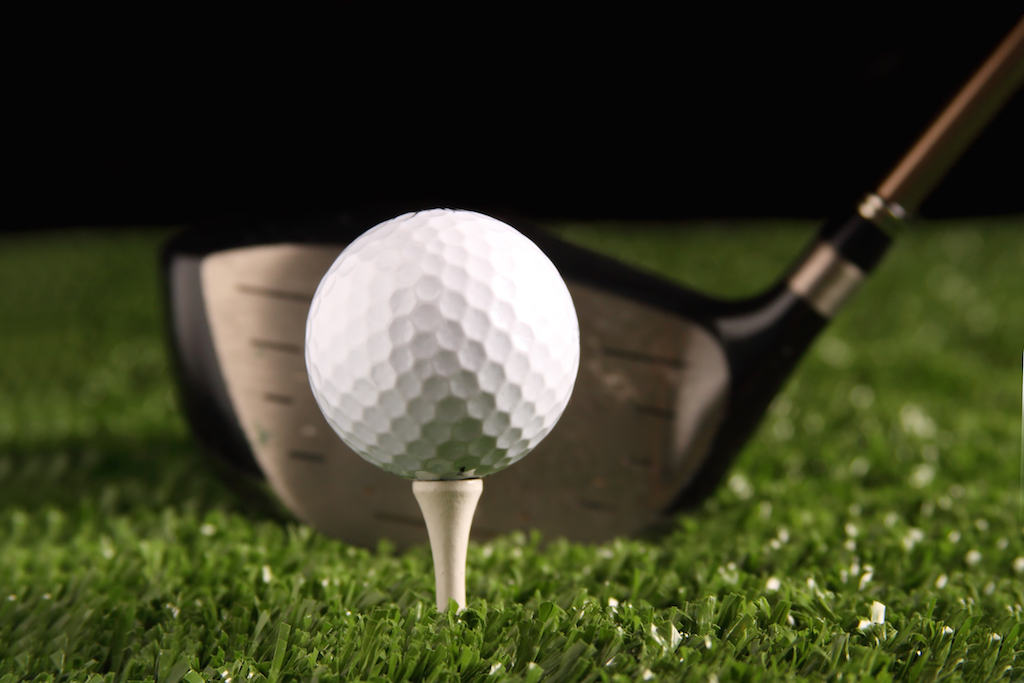
This story was selected as one of the 15 best GolfWRX stories of 2015!
Did you know that the average golfer is losing a ton of distance, simply by not optimizing ball launch physics? Most golfers launch the ball either too low, with too much spin, or a combination of both — sapping their game of distance.
I teach at one of the biggest and best facilities in Europe, and am lucky to use Trackman. The average angle of attack I see with players hitting a driver is 5 degrees down on the ball.
What is angle of attack?
Angle of attack (AOA) relates to whether your club is coming down, level or up into the ball through impact. Combine this with the loft of the club, and it affects both our launch angle and our spin rate.
The above picture shows what we call a positive angle of attack, where the club is moving upward toward the ball. I used TrackMan to to test different AOA’s and their effect on the distance the ball went. The results were startling.
Negative AOA
Using a typical swing of an amateur, I hit 10 shots with a 5-degree downward blow.
The Red circle shows the AOA at -5.2 degrees. The blue circle shows the carry distance at 216.5 yards. Total distance was 257.7 yards.
Positive AOA
Next, I made a change in my set-up position and a small thought change (I will explain at the end of the article). This allowed me to make a 5-degree positive AOA, where the club is coming upwards into the ball through impact. Here are the results:
In this picture, we see the AOA in the red circle (5.8 degrees upwards) and the carry distance jump to 262.4 yards. This happened despite slightly less swing speed. With this AOA, the launch angle basically doubled, and the spin rate dropped a little. Total distance was 288.6 yards – not bad for little a swing speed just barely more than 100 mph.
Extreme AOA
Next, I tried 10 shots with as much positive AOA as possible. I teed the ball as high as I could, and visualized the club moving upwards though impact. This AOA would be impossible for a lot of golfers to do because the body positions required to do it require a lot of flexibility and mobility. But, just for fun, here are the results:
Here we see an insane AOA of 8.1 degrees up on the ball – this is in the long-drive competitor range. I even threw an 11.4 degree AOA for my last one.
Again, we see the spin rate drop slightly, and the launch angle shoot up past 16 degrees. This results in a massive 272.4 yards of carry distance – a 55.6 yard improvement, and an average of 295.5 yards total.
There are even a few shots more than 300 yards thrown in — with a swing speed of little over 100 mph, which is certainly attainable to a lot of golfers.
Keen eyes
Some of you may have noticed that the positive AOA also resulted in a better smash factor and slightly higher ball speed. However, when the results are adjusted for ball speed, the higher AOA still comes out tops.
How I did it
Mainly, the improvements in distance stemmed from an understanding of how I wanted the club to hit the ball, followed by a deep visualization of impact. If you can see what you want the club to do, you will be more likely able to do it.
However, for those of you who want more of a “how-to,” here are some things you can try:
- Tilt your spine away from the target a bit more, so that your head is more behind the ball.
- Your left shoulder should be much higher than your right shoulder at address.
- Feel as if you swing a little more in-to-out. Even close your shoulders slightly at address. This will put the low point of your swing farther behind the ball, resulting in an upward AOA. Because of complex geometry (it’s called the D-Plane), your club will path will still be quite square, even though you feel like you are swinging the club head out to the right.
- Feel as if your hands move upward through impact. Ideally, this is done by allowing your left shoulder to rise through impact, although some great ball strikers such as long-driver Jamie Sadlowski do it by allowing the left arm to bend slightly through impact.
- Look at the underside of the ball as you impact it. This will keep your head back.
It is worth noting that as your AOA becomes more positive you will have to have a corresponding increase in tee height. That’s why long-drive champions tee it so high.
Word of Caution
A positive AOA is needed to maximize distance, but it is not the be-all, end-all of distance. There are more things to consider. I personally settle on around a +3 AOA, as this gives me a nice blend of distance and control. Ease into a more positive AOA and test to see if it is right for you. You don’t want to ruin your game at the expense of a few yards.
However, on that note, I actually hit the ball straighter and more consistently with a +3 AOA than I do with a -5 AOA.
- LIKE1252
- LEGIT214
- WOW140
- LOL58
- IDHT32
- FLOP49
- OB34
- SHANK102
Instruction
Clement: Stop ripping off your swing with this drill!

Not the dreaded headcover under the armpit drill! As if your body is defective and can’t function by itself! Have you seen how incredible the human machine is with all the incredible feats of agility all kinds of athletes are accomplishing? You think your body is so defective (the good Lord is laughing his head off at you) that it needs a headcover tucked under the armpit so you can swing like T-Rex?
- LIKE0
- LEGIT1
- WOW2
- LOL0
- IDHT0
- FLOP0
- OB0
- SHANK2
Instruction
How a towel can fix your golf swing

This is a classic drill that has been used for decades. However, the world of marketed training aids has grown so much during that time that this simple practice has been virtually forgotten. Because why teach people how to play golf using everyday items when you can create and sell a product that reinforces the same thing? Nevertheless, I am here to give you helpful advice without running to the nearest Edwin Watts or adding something to your Amazon cart.
For the “scoring clubs,” having a solid connection between the arms and body during the swing, especially through impact, is paramount to creating long-lasting consistency. And keeping that connection throughout the swing helps rotate the shoulders more to generate more power to help you hit it farther. So, how does this drill work, and what will your game benefit from it? Well, let’s get into it.
Setup
You can use this for basic chip shots up to complete swings. I use this with every club in my bag, up to a 9 or 8-iron. It’s natural to create incrementally more separation between the arms and body as you progress up the set. So doing this with a high iron or a wood is not recommended.
While you set up to hit a ball, simply tuck the towel underneath both armpits. The length of the towel will determine how tight it will be across your chest but don’t make it so loose that it gets in the way of your vision. After both sides are tucked, make some focused swings, keeping both arms firmly connected to the body during the backswing and follow through. (Note: It’s normal to lose connection on your lead arm during your finishing pose.) When you’re ready, put a ball in the way of those swings and get to work.

Get a Better Shoulder Turn
Many of us struggle to have proper shoulder rotation in our golf swing, especially during long layoffs. Making a swing that is all arms and no shoulders is a surefire way to have less control with wedges and less distance with full swings. Notice how I can get in a similar-looking position in both 60° wedge photos. However, one is weak and uncontrollable, while the other is strong and connected. One allows me to use my larger muscles to create my swing, and one doesn’t. The follow-through is another critical point where having a good connection, as well as solid shoulder rotation, is a must. This drill is great for those who tend to have a “chicken wing” form in their lead arm, which happens when it becomes separated from the body through impact.
In full swings, getting your shoulders to rotate in your golf swing is a great way to reinforce proper weight distribution. If your swing is all arms, it’s much harder to get your weight to naturally shift to the inside part of your trail foot in the backswing. Sure, you could make the mistake of “sliding” to get weight on your back foot, but that doesn’t fix the issue. You must turn into your trial leg to generate power. Additionally, look at the difference in separation between my hands and my head in the 8-iron examples. The green picture has more separation and has my hands lower. This will help me lessen my angle of attack and make it easier to hit the inside part of the golf ball, rather than the over-the-top move that the other picture produces.


Stay Better Connected in the Backswing
When you don’t keep everything in your upper body working as one, getting to a good spot at the top of your swing is very hard to do. It would take impeccable timing along with great hand-eye coordination to hit quality shots with any sort of regularity if the arms are working separately from the body.
Notice in the red pictures of both my 60-degree wedge and 8-iron how high my hands are and the fact you can clearly see my shoulder through the gap in my arms. That has happened because the right arm, just above my elbow, has become totally disconnected from my body. That separation causes me to lift my hands as well as lose some of the extension in my left arm. This has been corrected in the green pictures by using this drill to reinforce that connection. It will also make you focus on keeping the lead arm close to your body as well. Because the moment either one loses that relationship, the towel falls.


Conclusion
I have been diligent this year in finding a few drills that target some of the issues that plague my golf game; either by simply forgetting fundamental things or by coming to terms with the faults that have bitten me my whole career. I have found that having a few drills to fall back on to reinforce certain feelings helps me find my game a little easier, and the “towel drill” is most definitely one of them.
- LIKE11
- LEGIT1
- WOW2
- LOL0
- IDHT0
- FLOP2
- OB0
- SHANK8
Instruction
Clement: Why your practice swing never sucks
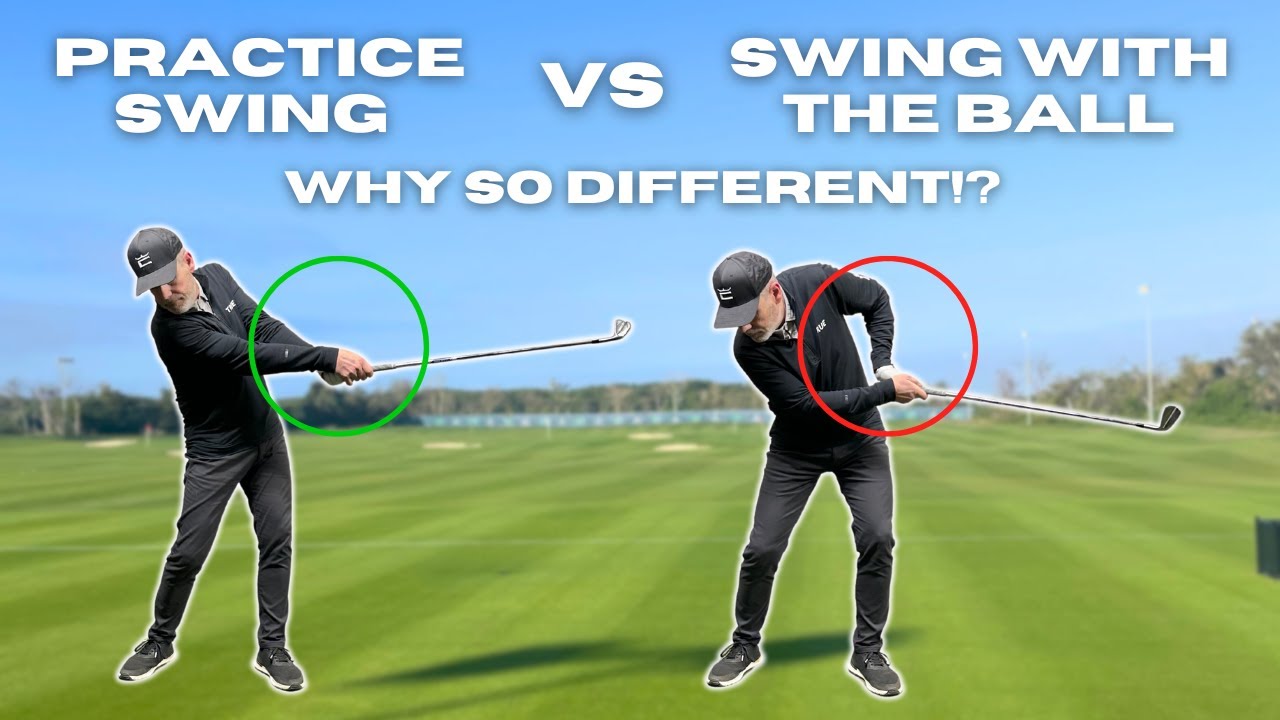
You hear that one all the time; I wish I could put my practice swing on the ball! We explain the huge importance of what to focus on to allow the ball to be perfectly in the way of your practice swing. Enjoy!
- LIKE0
- LEGIT0
- WOW0
- LOL0
- IDHT0
- FLOP0
- OB0
- SHANK2
-
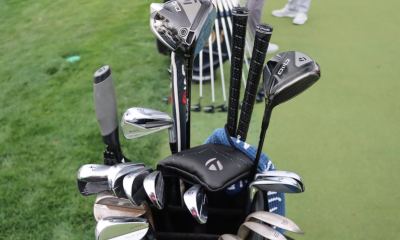
 Whats in the Bag3 weeks ago
Whats in the Bag3 weeks agoScottie Scheffler WITB 2024 (March)
-

 19th Hole10 hours ago
19th Hole10 hours agoJohn Daly stuns fans into silence with brutal opening tee shot on PGA Tour Champions
-

 19th Hole3 weeks ago
19th Hole3 weeks agoPaulina Gretzky opens up on receiving death threats following DJ’s move to LIV Golf
-
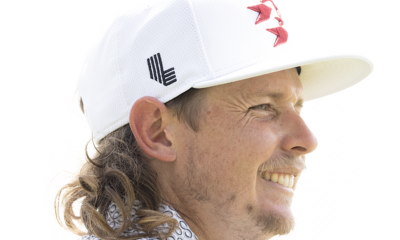
 19th Hole3 weeks ago
19th Hole3 weeks agoVincenzi’s LIV Golf Hong Kong betting preview: Trio of major champs primed for big week
-

 19th Hole4 days ago
19th Hole4 days ago2-time major champ announces shock retirement from the sport at age of 33
-

 19th Hole5 days ago
19th Hole5 days agoEdoardo Molinari reveals the latest PGA Tour golfer to turn down ‘good offer’ from LIV Golf
-

 19th Hole1 week ago
19th Hole1 week agoScottie Scheffler had an interesting response when asked how he ‘quiets the noise’ following Players victory
-

 19th Hole6 days ago
19th Hole6 days agoJon Rahm dealt fresh blow to hopes of qualifying for 2025 Ryder Cup

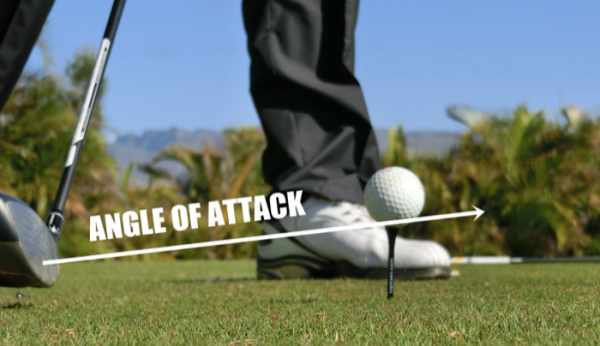
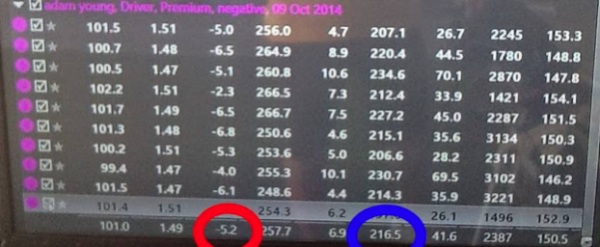
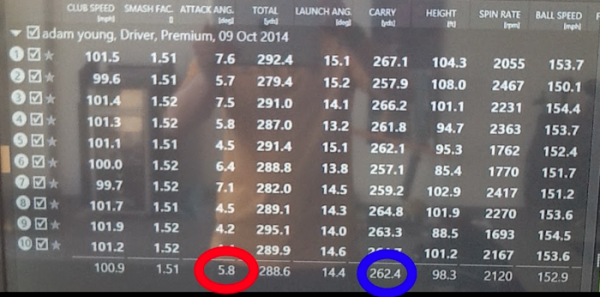
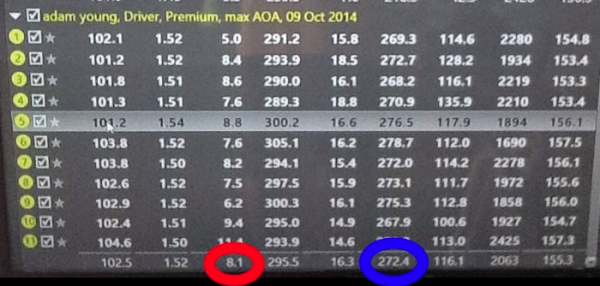












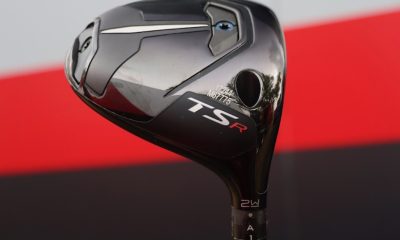

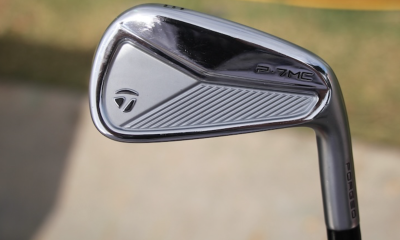

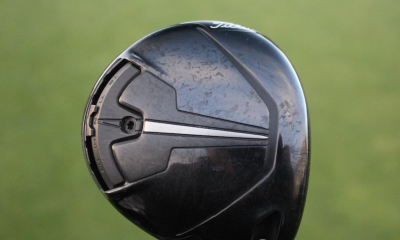

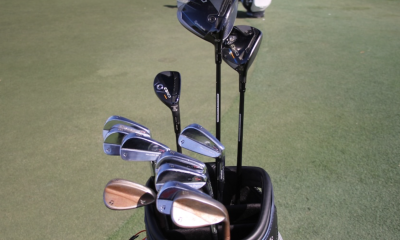

Dave
Aug 2, 2022 at 11:22 pm
I have not read this article much more than the title. Almost no one can change their swing using any of this advice. We are amateurs and trying to make our golf shots technical will never work! Focus on pre shot thoughts and not trying to change too much. The core of your body controls your swing. Do not let your arms do that for you. It might mean that you have to reduce your swing speed but making sure you hit the sweet spot is the only thing that matters.
ParHunter
Apr 24, 2015 at 11:09 am
The book ‘The Practice manual – The Ultimate Guide for Golfers’ listed in Adam Young’s ‘CV’ got me interested as I always felt that my practice goes to waste and I am not really improving. I am only half way through the book but I’ve already found out why I am not improving (too much internal focus). Can’t wait to read the rest and apply some of that stuff to my practice.
Would definitely recommend the book!
bigdriver
Apr 16, 2015 at 8:03 pm
It would be very interesting if you adjusted you driver so kept a consistent launch angle, but altered your angle of attack. Since you are altering both variables, these numbers are not true. You may as well just say launching it at 14 degrees will give you 50+yards instead of launching it at 7 as you did with the -5 AOA. It would be a great updated article if you only tweaked the 1 AOA variable.
Adam Young
Apr 21, 2015 at 1:27 am
It’s a valid point Bigdriver.
But we are looking at maxing out distance here. I agree that for the majority of folk, increasing driver loft will do a good enough job – but it also increases spin loft, hence lowering smash factor and increasing spin rate.
There are two option. This one gives more distance
bigdriver
Apr 28, 2015 at 3:58 pm
I think everyone would agree optimizing your angle of attack improves the distance you will carry the ball with a driver. The same is true for your launch angle. The big question is how much farther do you carry the ball when your AOA is optimized vs a poor AOA w/ a higher lofted spinnier driver….launching at the same angle.
dave boyd
Apr 8, 2015 at 8:41 am
this is a great article and the actual essence of the article is essentially numbers do not lie.
Here are the numbers glean what you can, period…maybe the author should have simply put the charts up and said nothing.
In any event I have sort of been down this road before but as time went by I lost this approach and was actually I am sure hitting down with my driver. Been out a couple of times since i read this and my driving seems to have improved although no extra 56 yards, maybe close to 15 or so. Fairways here are very soft so as they harden might see better results.
A few times I have actually hit the very top of the ball and results in a very weird bouncing 75 yard drive. I guess that is from too much left shoulder height and or too far from the ball.
Mad-Mex
Mar 30, 2015 at 10:32 pm
Very nice article, in my humble opinion, it would be even better if backed by actual on course/driving range measurements. Not bashing you, just that am old school and rather see measurements vs digital estimates.
Mike B.
Mar 26, 2015 at 11:27 pm
Whenever I tee the ball higher I pop it up. How do you cure that?
Adam young
Mar 27, 2015 at 12:24 am
Popping balls is a sign you are hitting down too much. Anything which gets the lowest point of your swing farther behind the ball will result in a more upward hit, and a lower strike on the face (all other things being equal).
So keep that head behind the ball
Mike B.
Apr 7, 2015 at 9:43 pm
I finally tried this tip today, and immediately started bombing most of my drives long and down the middle! I teed the ball off my left toe instead of my heel like I usually do, and wow it really helped. It even helped me hit my drives a lot straighter. I got a much higher ball flight, which I sorely needed. Thanks!
Adam Young
Apr 21, 2015 at 1:31 am
Hi Mike.
As always, advice needs context and is not for everyone – but I am glad it really helped your game. Hopefully that will continue for you
Al
Mar 26, 2015 at 12:44 pm
[Did you know that the average golfer is losing a ton of distance, simply by not optimizing ball launch physics?]
No, I only read and heard it ~100 times this week, so far. Same with the premise I have to get my clubs fitted even though I can’t produce the ~same swing twice in a row, and I have to replace my grips every 40 rounds even though they’re still fine.
Justin
Apr 22, 2015 at 4:29 pm
We do get a LOT of information. I tend to give a lot, as well. As individuals, we need to realize not everything applies to everyone. What works for me may not work for you… but if you ever need it, it’s there. We just have to have our filters working, I suppose.
Ron
Mar 25, 2015 at 4:23 pm
This tip is money………..so far. I dont wanna get too excited but after two range sessions I “seem” to be hitting the ball further. One thing I know for sure is that Im hitting it out of the middle more and higher up the club face. Playing a round on Friday, the’ll be the true test. Thanks for the tip!
Mitch
Mar 25, 2015 at 11:36 am
I agree with the numbers, I ain’t that good of a ball striker but I can get over 1.5 with my driver with relative ease. that said, I have read many sites and watched videos where you should intentionally hit the ball slightly high and towards the toe of the driver, albeit ever driver’s sweet spot could be slight different, but would you recommend this method of missing the sweet spot?
Adam young
Mar 26, 2015 at 3:34 am
If hitting slightly out of the toe produces higher ball speeds, it might be a viable option. The sweet spot is actually located more toe-side when your face is closed to the path (a complicated topic which I may do a post on one day), so it might not be a bad option.
Mike Weill
Mar 25, 2015 at 11:17 am
I recently purchased a Callaway Razr Xtreme 11.5 deg driver, which has a low center of gravity. I previously had a Taylormade R9 then R11 9.5 degrees that I barely hit more than head high. The Callaway launches the ball high enough to get over an average Palm tree. I averaged 200 yds with the Taylormade’s and 220 yds with the Callaway. I am 70.
I have to believe the author’s article is valid.
(Last year at a Titleist ball fitting I averaged 85 mph head speed measured on Trackman.)
dcorun
Mar 25, 2015 at 10:39 am
What about the 85-90 ss players because I’m 62 and will never see a swing speed of 100 again. Will changing the AoA to + help me/them gain distance also?
NH Golfer
Mar 25, 2015 at 12:13 pm
I am fortunate enough to own a Trackman even though I am neither an instructor nor a professional. Just a guy obsessed with golf. I have shared my Trackman with about 50 golfers. Almost all of them have hit down on the ball with their driver instead of up. If you have a PGA swing speed of 110-125 MPH, you can “get away with it”. For the rest of us, just look to the LPGA averages. They swing an average of about 95 MPH and hit UP on the ball about 5 degrees.
You can get a MAX smash factor of 1.52 with a driver and a nice hybrid or fairway wood. More common with the driver.
My research has shown that if you have a draw swing you can get a max of about 250 yards total (in normal conditions) with a 90 MPH swing. An 85 MPH swing with the proper contact and mechanics (hit up on the ball, etc.) will get you total roll out of about 235-238. Hope that helps.
Marc
Mar 25, 2015 at 1:48 pm
You can’t get a smash factor of 1.52. If Trackman spit that number out, it’s most likely a result in a mis-read either of the calculations for smash (clubspeed/ballspeed). Good info on smash here: http://www.tutelman.com/golf/ballflight/smashfactor.php
That being said, a positive AoA is necessary to optimize launch conditions.
NH Golfer
Mar 25, 2015 at 2:33 pm
Appreciate the reply, but highly doubt Trackman would stake their reputation on providing false numbers. They have nothing to gain by showing numbers that are not achievable. They don’t sell clubs or balls. They don’t give away their Doppler Radar launch monitors to the pros that play on the PGA tour. The pro’s pay $25k for them like the rest of us. Trackman has only one goal. Provide the most accurate information necessary. Not sure why the two numbers don’t add up but those are my thoughts.
Regis
Mar 25, 2015 at 10:21 pm
Not to stick my neck in but a smash factor of over 1.50 is very difficult to achieve. As to Trackman -no question their product is one of the tops in the business. But it is well known that they need to be properly calibrated and like any electronic device they can give false readings. In fact more than one vendor has been accused of juicing his device so as to provide customers with inflated stats.
Adam young
Mar 26, 2015 at 7:47 am
Trackman measures the overall COM of the clubhead.
The toe can be moving a different speed to the heel. Hence, trackman may measure a higher smash factor because smash is clubhead speed/ball speed.
There is nothing fishy or incorrect about the stats, you just need to know how trackman calculates these things. But, even when adjusted for smash and ball speed, the higher AOA comes out more effective in terms of yardage/mph ball speed
sgniwder99
Mar 24, 2015 at 5:09 pm
Are you using an SLDR or similar type driver designed for super low spin? Because that negative angle of attack with spin numbers in the low 2000s is really surprising to me. Even though drivers don’t have grooves on the sweet spot, it seems like pounding down on the ball like that would produce more spin, even with a clean strike. I’m certainly no expert on that, but I’d appreciate hearing your thoughts.
Adam young
Mar 25, 2015 at 3:47 am
I wasn’t using a sldr. He new clubs will definitely help, as they increase launch and lower spin through increasing vertical gearing. Those clubs will help people get the desired launch conditions without need for a swing change.
However, witht he cog further forward, horizontal gearing is also increased. So it’s just trade offs
other paul
Mar 24, 2015 at 3:29 pm
Going to need to get my aoa checked now. I launch around 10* with 155 ballspeed (swinging around 105). I carry 265-275 and roll into the 290s. Longest drive on a GC2 is 299.1. Gotta find 1 more yard.
Nocklaus
Feb 11, 2016 at 12:15 am
I too swing around 105, but I have never carried over 250 at any launch angle. But of course, that’s on the course, not with Trackman…
marcus
Mar 24, 2015 at 2:04 pm
Sounds just like the grocery store Golf Magazine cover articles. MyGolfSpy will replace WRX in 3…2…1
Pingback: This Posting Should Be “Trackman Proves MCS” | WAX Golf
Golfraven
Mar 24, 2015 at 9:16 am
mean bold not bikd
Golfraven
Mar 24, 2015 at 9:15 am
50 yards longer is quite a bikd statement but you backed it up with good stats and also with good advise. I will take it to the range next time and try different setups and swing thoughts. Cheers
Adam Young
Mar 24, 2015 at 8:01 am
Joe Golfer –
Cheers for the comments – I will try to answer your questions.
I didn’t use a simulator, but we tracked real balls using Trackman. As you know, this is top of the line radar technology that the top professionals use. Their calculations for roll are based on their endless testing and actual recording of data and results. I am not sure why I get less roll, but it will likely be something to do with the Landing angle.
Smash factor – Trackman regularly reports higher smash factors than 1.5 for many reasons. It tracks the overall COG of the club, and the point of the face where the ball is contacted may be moving quicker that the whole COM. However, I ahve also adjusted for smash factor, and the positive AOA still trumps the negative for efficiency of distance/mph ball speed.
Oh, and btw, I do hit every shot perfect 🙂 kind of in jest there, but I can regularly clock up 20 shots in a row with a smash factor of 1.5 or more.I would create a video, but that would be showing off. I have a trackman combine test score of 88.6, which is up there with Poulter and Rose and Jb Holmes, so I’m not a bad player.
Trackman have also created a chart showing the maximum possible distances with certain swing speeds. I think 100mph topped out at just over 300 yards total, so this article just shows me reaching that potential. All of those were based on their physics calculations.
Hope this answers any questions. You raised good points
NH Golfer
Mar 25, 2015 at 3:01 pm
88.6 on the Trackman Combine?! You are the man!
Please show off.
Mar 25, 2015 at 5:17 pm
Please show off, post a video of your smash factor swing, trackman stats.
Joe Golfer
Mar 24, 2015 at 1:51 am
Seems odd that he usually gets about 40 yards of roll after the carry when he has a negative angle of attack, yet he usually gets about 25 yards (or less) of roll with the positive angle of attack.
It seems like the positive angle of attack should produce more roll, as it is taking spin off the ball.
The ball should also be coming down from a greater height, yet have a better angle of descent due to the + AoA and lower spin.
This chart shows far less spin with the + angle of attack, yet the roll out is far less than the neg-AoA.
The smash factors exceeding 1.50 on a regular basis also seem out of whack.
I may be wrong, but I was of the understanding that one sees the 1.50 pretty much on perfect hits.
Admittedly, the tester is a teaching professional, but even they don’t hit every shot perfectly (or better than perfectly).
I also agree with several other commenters that one isn’t likely to see a 270 yard carry with a 101 mph swing. Maybe on his simulator, but I kind of doubt it on a real course.
I’m not disputing the gist of the article.
I concur that a positive AoA is far better than a negative one, and that it will increase your yardage.
Even though the testing was done using Trackman, which is considered a quality instrument, it just seems like there are certain aspects of the article that don’t fit or need more explaining by the author.
Alex
Mar 24, 2015 at 10:49 am
Look at the difference in peak heights between the two methods. The (-)AOA method comes in really hot producing lots of roll similar to a long iron. The (+)AOA lands more softly despite having less spin, so there is less roll out. Judging roll is difficult, so a soft landing is easier to hit the fairway with.
Joe Golfer
Mar 26, 2015 at 3:55 am
@Marc, Thanks for that link to the Tutelman website. I’ve read stuff by him before, and he really knows his stuff. It can get a little complicated sometimes.
NH Golfer should read that Tutelman link you included in your post.
I suspect that Trackman (which has an excellent reputation) may be slightly off in measuring things as far as that Smash Factor.
That Tutelman article just reinforces my opinion on the matter.
I found it interesting that the best smash factor one could reasonably expect would be around 1.47.
I’m not opposed to the gist of the article. A positive AoA is the way to go for longer distance.
Other factors in this seem skewed as well, which I addressed in a separate post on this same thread.
Joe Golfer
Mar 26, 2015 at 4:16 am
@Alex. I don’t know if the higher peak height of the positive AoA would necessarily lead to a softer landing. If I hit a tee shot off of a significantly elevated tee box, I’ll get lots more roll. Obviously, that’s not exactly the same thing, but I think you know what I mean. You don’t get a moonball arc off an elevated tee box, and you don’t get one with a positive AoA (which would lead to that softer landing you mentioned).
Just because the ball gets higher doesn’t mean the descent angle is steep, since today’s drivers and balls tend to flatten out the trajectory, especially with a professional hitting them such was the case in this test.
Pros hit much higher shots than they used to. I’ve gone to pro tourneys, and I can recall the days when tee shots were relatively low. Now the height is just soaring compared to 25 years ago. Again, the higher trajectory doesn’t mean that the shot has a moonball arc to it. Those higher trajectories flatten out in mid air before losing steam, leading to an even better descent angle and further roll out. A higher peak trajectory may lead to even more roll out, and that’s what I would expect. The ball is having less backspin, so that leads to two things: 1. I would expect the drop angle to be not as steeply downward as a ball with more backspin 2. Having less backspin means the ball rolls further since it isn’t trying to check up sooner, so to speak (Yes, I know it doesn’t check up like a shot onto a green, I just didn’t know a better terminology to describe it).
As for hitting the drive on a lower trajectory with the negative AoA, I don’t consider the analogy another commenter noted of it being like a skulled pitch over the green or hitting a ball thin as reasons why the ball runs further as an accurate analogy. We’re talking about well hit drives here, not bladed pitches. That is applicable with pitches, but doesn’t seem so to me with drives by this professional golfer. It’s apples and oranges.
NH Golfer
Mar 25, 2015 at 3:16 pm
The increased roll makes lots of sense. If you hit a ball with such an low launch, it will hit the ground a lot earlier and run like a scalded rabbit. Think of skulling a pitch over the green. The carry (time it is in the air) is less but the distance is longer than if you pitched properly. The same for hitting a ball thin. It won’t stay in the air long but it will go farther than you hoped when you (mis)hit it! A launch angle in the lower single digits with a driver is NOT good! If you are lucky the fairway is wide and dry so it can run to help offset the shot you created.
Chris C
Mar 24, 2015 at 12:09 am
I tend to focus on launch angle when getting fitted. I realize that an inside to out swing combined with an ascending angle of attack is preferable to my woefull over the top outside in and 5 to 7 seven degree negative angle of attack. Alas, after some 55 plus year’s of golf, my swing has defied the best efforts of some very good instructors to change both my swing’s path or angle of attack. Hence, my focus on launch angle. For reasons I do not fully understand, my swing produces extremely consistent launch angles in the neighborhood of 16 to 17 degrees with spin rates in the neighborhood of 2300 to 2400 all while using a driver measured at 10.4 degrees. I have tried teeing it high and strove to alter at least my angle of attack. The resulting swings produced launch a glee in the neighborhood of 19 to 20 degrees and distances similar to my 6 iron. For fun, a local fitter had me try a driver with 8 degrees of loft. My interesting swing repeatedly produced drives with 14 degree launch angles and 2100 spin. This old dog might not be capable of learning new tricks.
Robert
Mar 23, 2015 at 11:29 pm
I agree with Golfrnut. The driver with the first swing was a horrible fit for that swing. Just by having a proper fit would gain 20+ yards for that swing. Having a launch angle of 4-7 degrees is just flat out terrible. I know some people hit it too low and don’t know better, but that is beyond what some people are hitting the ball. They are at 8-12 degrees launch angle.
Adam Young
Mar 24, 2015 at 8:05 am
Hi Robert – yes, getting a club with more loft would have increased the launch angle and definitely picked up yardage. However, it would have also increased spin-loft, reduced smash and not created as much distance total as the adjustment made.
This article is simply to explain how to top-out distances. Clubfitting can get you a long way without the need for a swing change.
Golfrnut
Mar 23, 2015 at 10:59 pm
The 56 yard gain is heavily one-sided by the fact that the proper equipment was not used to fit the original swing. The distance gap should not have been that great if the equipment was properly fit to the original swing in the first place. There is a lot missing in the article that could have been improved with the old swing to shrink the distance gap and give the original swing much better distance results. There is a lot to be desired in terms of showing the true story of what is achievable and what is not when comparing those swings. Folks do not need to hit up do make distance gains or optimize distances for their respective swing speeds. Articles like this tend to create more problems than they fix.
Not a fan of this one at all….
JT
Mar 24, 2015 at 4:53 am
The point of the article is to focus on a variable, notn overall fit maximization. I found it interesting, but like many others things I’m not going to manipulate for aoa on the course. Your point is not necessarily wrong about the fit, but it’s not the focus either. Food for thought.
Adam Young
Mar 24, 2015 at 8:09 am
JT, you are correct, as you are also Golfnut.
We could also say that I could have taken the route of hitting the gym for 10 years and packing on muscle to swing it faster, or change swing mechanics to increase speed.
But it wasn’t the point of the article. This was to see what kind of distances are achievable if launch and spin are closer to optimal, and how we can achieve that. A club fit will not achieve optimal. Combining the above info and club fit would, but you cannot be all encompassing in a 1000 word article.
Also, I put a nice little disclaimer at the bottom stating that this is not the route to go for everyone.
Golfrnut
Mar 24, 2015 at 12:09 pm
Points well taken. The biggest issue I see this creating, is everyone trying to tee the ball way out in front, hanging back, etc…doing everything humanly possible to create this upward angle of attack for efficiency. With the article’s focus on gaining so much yardage, the vast majority here are going to think they are all inefficient and immediately start trying to go +5 or more up. Truth being told, depending on the speeds, one can pretty much max out at 0* or in the negatives and not see any real gains going positive. Those Trackman graphs are a bit misleading in that regard, so you cannot base “optimization” directly off of those. The article kind of projects itself like an infomercial with the magical cure to gaining yards. You have to remember, a good majority of golfers do not have a real understanding of what all the numbers mean. The one number they do understand is distance, but not all in the sum of what it takes to get there. This all coming from someone who is at a +2.5-4.0, and that is just my natural swing mechanics. I have never tried to change or alter that, that’s just what I have, and it’s consistent. People who are 0* or slightly negative are fine too, as you can get numbers that are right up to where those “charts” say. The article kind of claims that anyone who is not positive, is inefficient and leaves yards on the table, and that’s not true at all. Most are inefficient because they have a face contact problem, and not an AoA issue.
Adam Young
Mar 24, 2015 at 5:06 pm
Golfnut, you raise good points, all of which I have made myself before. Please remember that this is a 1000 word or less article. It’s tough to excite an audience enough to guarantee a read and at the same time relay every potential pitfall. But if you read the many thousands of words I have written elsewhere you will see that we share many of the same views.
We could also claim that every article telling slicers how to draw the ball has the same issues. It is likely not the best route to golf improvement.
But, for people looking to see what is possible, the article still stands true. You are not going to get maxed out numbers with a negative AOA.
Martin
Mar 23, 2015 at 7:56 pm
I had no idea it was that easy to drive the ball that far…duh
Tony
Mar 23, 2015 at 5:01 pm
Wat was that on? While i fully agree that by hitting + with the driver compared to – will definitely gain yardage, theres no way a 100mph swing is carrying the ball 270yds. Not possible unless a healthy wind in ur back. Good test though
Rich
Mar 23, 2015 at 5:38 pm
I don’t know if you’re right. Look at the launch and spin. Pretty good ball speed too. I think it’s possible. Good article, but not that easy to do for most golfers.
Jon
Mar 23, 2015 at 5:45 pm
105-110 mph you can with solid contact with good launch angle and low spin but not 100 or any less could you carry it that far. I agree with you but that not at 100 mph but he did say little over which if it reaches 105-107 with what I said then yes you can fly 270
larrybud
Mar 23, 2015 at 10:38 pm
Flightscope optimizer says you can:
http://flightscope.com/products/trajectory-optimizer/
I put in his first numbers (from the bottom chart) and it calculated carry at 265.5
Not sure if his numbers are calculated or measured, however. Ball speed is way too high for his clubhead speed, as you can see smash factor is >1.50
Adam Young
Mar 24, 2015 at 8:13 am
Guys, this was done with Trackman. It wasn’t a simulator, or a guess, but a $25,000 dollar piece of doppler radar.
Smash can be higher than 1.5 as trackman measures clubhead mass not the strike point on the face (which can be different and moving at different speeds. But, when adjusted for ball speed, the positive AOA still worked out more energy efficient in terms of yards per mph ball speed.
Dan Sueltz
Mar 24, 2015 at 10:24 pm
Having used Trackman since 2006, and fit thousands of golfers with attack angles from -9 to +11, I think this is a great article on changing just one variable and noting the extreme results that can be achieved. In a fitting, we still concentrate on proper launch angle and tightness of shot dispersion but show our golfer the dramatic difference a positive angle of attack can have on launch angle, spin and distance. I play with a guy that probably is lucky to have a 95 mph SS but hits 250-260 routinely because he has such a huge positive AoA and low spin. Everybody that plays with him thinks he is hitting a sky ball but when they end up 40 yards behind him they wonder how he did it. Pretty simple when you look at Adam’s numbers.
Yessir
Mar 23, 2015 at 4:47 pm
So do you buy into the recent trend in more low forward CG based drivers in conjunction with a more positive AoA? Theoretically speaking more forward CG, more loft, and more positive AoA is the recipe for even longer drives, right?
Ron burgundy
Mar 23, 2015 at 4:32 pm
Enjoyable article. Very good tips. I’m a +2 that’s always searching for more yards. Another good tip is to sit an empty water bottle on its side out in front a foot or two while practicing. This will help you hit up or you’ll hit the water bottle. Empty if course!
Patricknorm
Mar 25, 2015 at 8:00 am
Good if not great tip. I’m not quite at your level, ( 5.5 factor) but I’m always working on carefully increasing my AoA. When I get tired I know my AoA is negative. Hence I occasionally hit a tee ball that goes sky high. Thanks for sharing.
Adam Young
Apr 21, 2015 at 1:35 am
Cheers Patricknorm. Yes, a negative AOA is strongly correlated with a skied shot. You can still sky the ball hitting on the up, but it is much more difficult to do and you would need a much bigger tee.
Most people using the above advice may find they are hitting lower on the face if anything. I will address this in a future article
Adam Young
Apr 21, 2015 at 1:33 am
Good tip Ron – I have seen Andrew Rice do something similar with a box of balls in front.